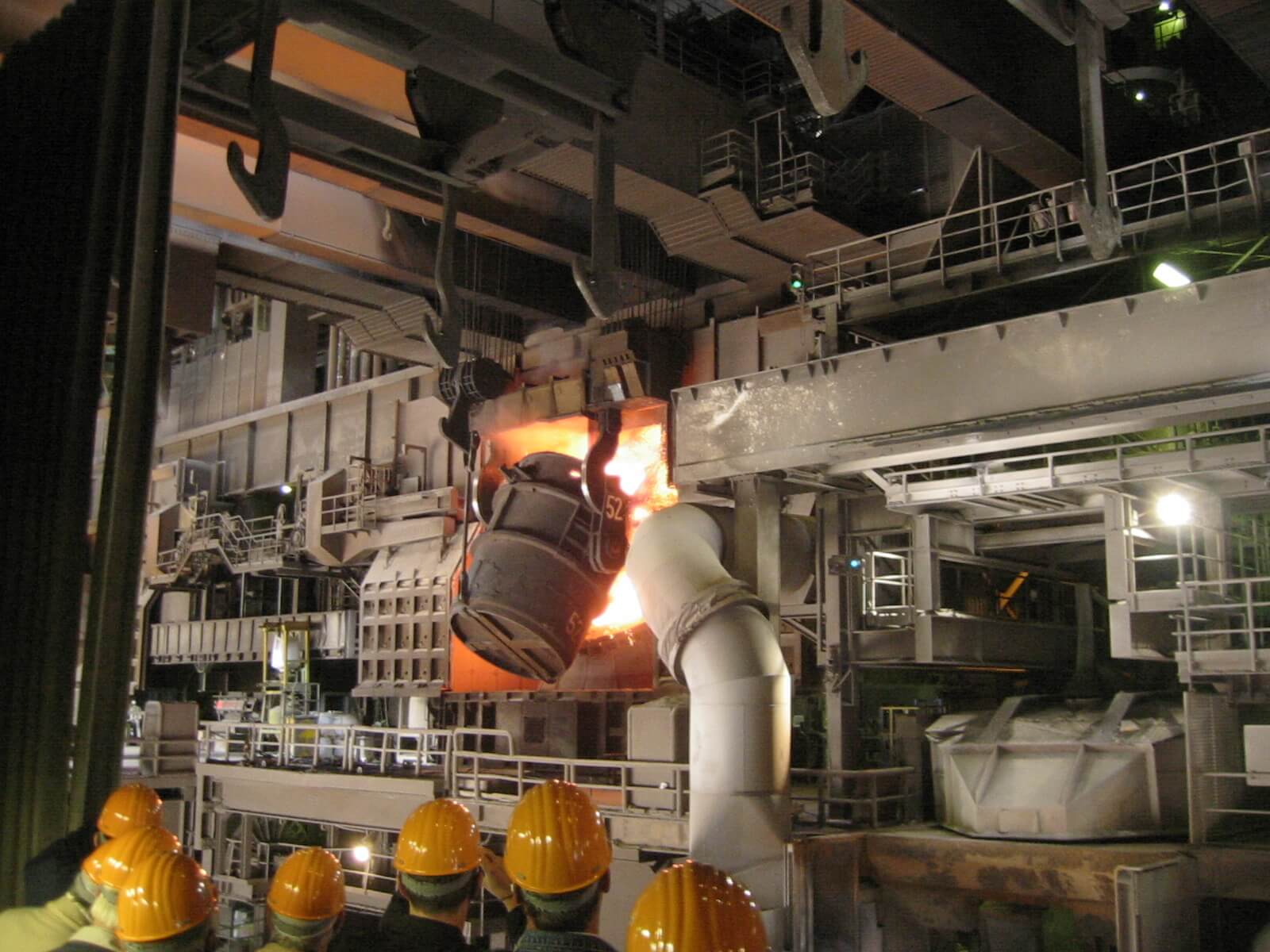In the realm of modern steel production, oxygen steelmaking stands out as a pivotal innovation. This process revolutionizes the way we create high-quality steel, offering a blend of efficiency, cost-effectiveness, and environmental consideration.
Here, we delve into the intricacies of oxygen steelmaking, covering its process, tools, and types of furnaces used.
What is Oxygen Steelmaking?
A High-Performance Steel Production Process
Oxygen steelmaking is a method of steel production where oxygen is blown into a large, brick-lined furnace to reduce carbon content in iron. Typically used in conjunction with molten pig iron from blast furnaces, this technique is renowned for its rapid processing times and superior control over the final product’s chemical composition.
The Key: A Blast of Pure Oxygen
The process involves injecting a powerful stream of pure oxygen over the molten iron, igniting a series of chemical reactions that refine the iron into steel. This method differs significantly from traditional steelmaking, which relied on air and resulted in slower, less controlled processes.
Advantages of Oxygen Steelmaking
Enhanced Efficiency and Quality
Oxygen steelmaking’s primary advantage is its efficiency. The process can convert a batch of molten iron into steel in less than an hour, a fraction of the time needed for older methods. Moreover, it allows for precise control over the steel’s carbon content, leading to higher quality and more consistent products.
Environmental Considerations
This method is also more environmentally friendly. The process reduces the emission of greenhouse gases compared to traditional methods, making it a more sustainable option in the long run.
The Oxygen Steelmaking Process: Step-by-Step
Step 1: Preparing the Charge
Steel production begins with preparing the charge, which typically consists of pig iron, recycled steel, and alloying elements. These are carefully measured and loaded into a Basic Oxygen Furnace (BOF).
Step 2: The Blowing Process
Oxygen is blown into the BOF at supersonic speeds, igniting a reaction with the carbon in the pig iron to form carbon monoxide and carbon dioxide, thus reducing the carbon content and transforming it into steel.
Step 3: Temperature and Composition Adjustments
Additional materials, such as lime or scrap iron, are added to adjust the composition and temperature. The lime reacts with impurities to form a slag, which is removed from the steel.
Step 4: Tapping the Steel
Once the steel reaches the desired composition and temperature, it’s tapped from the BOF into a ladle for further processing or casting.
Step 5: Secondary Steelmaking
For certain applications, the steel undergoes secondary steelmaking, involving further refining, such as deoxidation and alloying.
Step 6: Casting
Finally, the steel is cast into various forms, like slabs, billets, or blooms, for further processing or direct use.
Key Components of an Oxygen Steel Furnace
The Basic Oxygen Furnace (BOF)
The heart of oxygen steelmaking, the BOF is a large, refractory-lined vessel capable of withstanding high temperatures and the steelmaking process’s rigors.
Oxygen Lance
A high-speed delivery system for oxygen, crucial for initiating and controlling the steelmaking reaction.
Alloy and Flux Bins
Storage and delivery systems for various alloys and fluxes (like lime) used to refine the steel’s composition and remove impurities.
Slag Removal Systems
Designed to safely and efficiently remove the slag produced during the steelmaking process.
Control Systems
Advanced control systems monitor and adjust the process, ensuring optimal efficiency and quality.
Types of Oxygen Steelmaking Furnaces
Top-Blown Basic Oxygen Furnaces
Uses a water-cooled oxygen lance for blowing oxygen from above.
Bottom-Blown Furnaces
Injects oxygen through tuyeres in the furnace bottom, sometimes used in combination with a top lance.
Combined Blowing Furnaces
A hybrid approach, using both top and bottom oxygen delivery for enhanced control and efficiency.
Application of Oxygen Steel in Various Industries
Automotive Industry
Vehicle frames, engine parts, and body panels.
Construction
Structural steel for buildings and infrastructure.
Manufacturing
Machinery, tools, and various equipment components.
Aerospace
High-strength components for aircraft and spacecraft.
Conclusion: The Future of Steelmaking
Oxygen steelmaking represents the intersection of tradition and innovation in the steel industry. Its efficiency, environmental friendliness, and product quality make it a cornerstone of modern manufacturing. As industries evolve, oxygen steelmaking continues to play a crucial role, pushing the boundaries of what’s possible in metal production.
Related Posts
- The Evolution of CNC Machining: Traditional vs. New Age Materials
Introduction to CNC Machining CNC machining stands for Computer Numerical Control machining, a process used extensively in modern manufacturing to control machine tools with computers. This method allows for the…
- The Evolution of CNC Programming: Past, Present, and Future
The Evolution of CNC Programming: Past, Present, and Future Computer Numerical Control (CNC) is a high-tech innovation that uses programming to automate machine tools. It all began in the 1950s…
- The Evolution of CNC Machining: Traditional vs. New Age Materials
```html Introduction to CNC Machining CNC machining stands for Computer Numerical Control machining, a process used extensively in the manufacturing sector. It marks a significant evolution from traditional manual machining…








